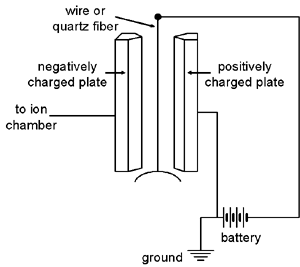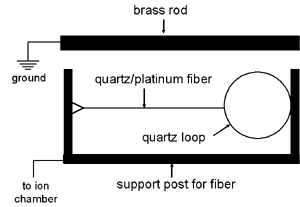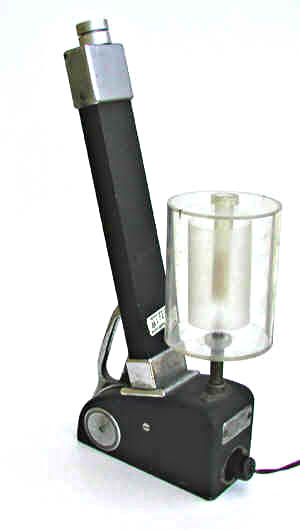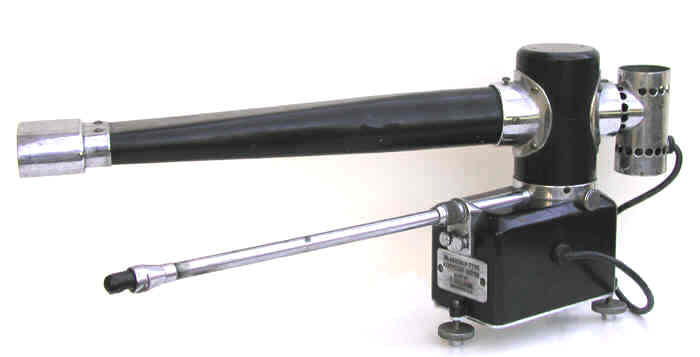String Electrometers
String Electrometers
Paul Frame, Oak Ridge Associated Universities
String electrometers employ a charged fiber or wire suspended in an electric field. By measuring the deflection of the fiber, usually with a microscope, the collected charge on the fiber can be measured. In almost all cases, the fiber is attached at one end to a post and at the other end to a flexible quartz bow which keeps the fiber taut.
While string electrometers have usually been employed to measure the collected charge from ion chambers, they were also used with Geiger counters. Pulses from a Geiger counter produce “kicks” in the fiber and the number of kicks can be related to the intensity of the radiation.
In general, string electrometers are portable and easy to set up. Perhaps their major disadvantage is the fact that their response is not linear.
The two major types are the Wulf electrometer, and what we will call a generic string electrometer, for lack of a better term.
Wulf Electrometer

The Wulf electrometer, first described in 1914 (Phys. Zeitz. 15:250, 611), consists of a fine Wollaston (platinum) wire or a metal-coated quartz fiber suspended between two plates. The wire/fiber is attached to an adjustable post at the top and a quartz fiber bow at the bottom. The bow ensures that the wire/fiber is kept taut. The plates, also adjustable, are approximately 1 cm apart. A potential of 100 volts or so is maintained between the plates, while the charge being measured is applied to the fiber.
Generic String Electrometer

This particular type of electrometer was popular because of its simplicity. In fact, it is so simple that it blurs the distinction between an electrometer and an electroscope.
A metal coated fiber or wire is attached at one end to a supporting post and at the other end to a quartz bow. As shown in the accompanying diagram, a brass rod is positioned parallel to, and about 5 mm away from, the fiber. The charge to be measured might be applied to the fiber while the brass rod is grounded. Alternatively, the fiber might be grounded while the charge is applied to the brass rod. In either case, the fiber is deflected towards the brass rod.
-
String Electrometer of Carl Braestrup String Electrometer of Carl Braestrup

-
String Electrometer of Carl Braestrup String Electrometer of Carl Braestrup

